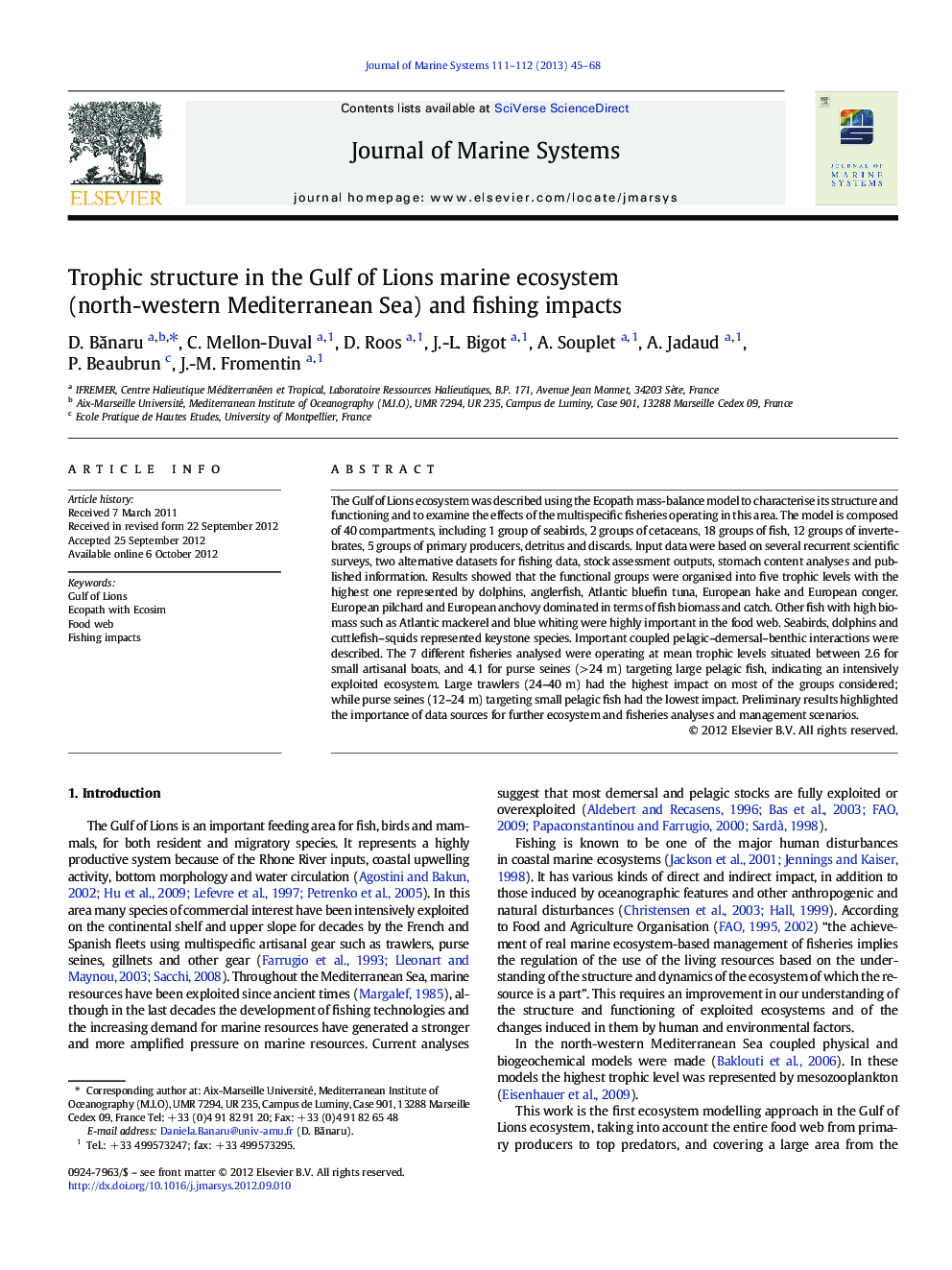| کد مقاله | کد نشریه | سال انتشار | مقاله انگلیسی | نسخه تمام متن |
|---|---|---|---|---|
| 4548170 | 1627311 | 2013 | 24 صفحه PDF | دانلود رایگان |

The Gulf of Lions ecosystem was described using the Ecopath mass-balance model to characterise its structure and functioning and to examine the effects of the multispecific fisheries operating in this area. The model is composed of 40 compartments, including 1 group of seabirds, 2 groups of cetaceans, 18 groups of fish, 12 groups of invertebrates, 5 groups of primary producers, detritus and discards. Input data were based on several recurrent scientific surveys, two alternative datasets for fishing data, stock assessment outputs, stomach content analyses and published information. Results showed that the functional groups were organised into five trophic levels with the highest one represented by dolphins, anglerfish, Atlantic bluefin tuna, European hake and European conger. European pilchard and European anchovy dominated in terms of fish biomass and catch. Other fish with high biomass such as Atlantic mackerel and blue whiting were highly important in the food web. Seabirds, dolphins and cuttlefish–squids represented keystone species. Important coupled pelagic–demersal–benthic interactions were described. The 7 different fisheries analysed were operating at mean trophic levels situated between 2.6 for small artisanal boats, and 4.1 for purse seines (> 24 m) targeting large pelagic fish, indicating an intensively exploited ecosystem. Large trawlers (24–40 m) had the highest impact on most of the groups considered; while purse seines (12–24 m) targeting small pelagic fish had the lowest impact. Preliminary results highlighted the importance of data sources for further ecosystem and fisheries analyses and management scenarios.
► We characterize the structure and the functioning of the food web in the Gulf of Lion.
► European pilchard and European anchovy represented key link groups and high landings.
► We showed coupling between compartments and top-down control by demersal predators.
► Indices showed that the Gulf of Lion's ecosystem was highly exploited by fisheries.
► Large trawls had the most negative impact and small purse seines had the lowest one.
Journal: Journal of Marine Systems - Volumes 111–112, February 2013, Pages 45–68